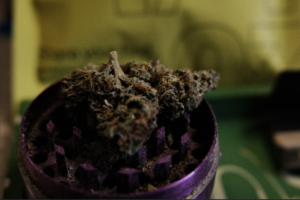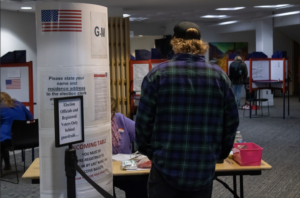Living on a college campus means that experimentation is inevitable. When you open a space for experimentation with substances and behavior but criminalize it to no end and limit and stigmatize harm reduction resources, you have done irreparable damage.
The University of Maine has several very important and helpful harm reduction resources: going beyond free condoms to encourage sexual protection of several different forms, having fentanyl test strips available for student use, and not criminalizing some alcohol or drug-related UVAC and UMPD activity. However, as with any good thing, there is always more that can be done.
One helpful thing would be to provide free-of-charge pregnancy tests to students. Financial issues should genuinely be no obstacle for this: not when 100 pregnancy test strips are the same price as a few Starbucks lattes but a 100-pack of condoms (of the brand available in any given residence hall) is almost the same as the student activity fee. Having free pregnancy tests and resources for pregnant students to use covers the extra step that condoms don’t.
Having more spaces where students can seek advice on abortion, adoption, and parenting could prove incredibly helpful not just for those affected by pregnancies; it promotes a culture of safety and support. Bangor has two beloved community organizations – the Mabel Wadsworth Center and Maine Family Planning – that provide gender-affirming care, abortions, pregnancy support, and more healthcare. But, the issue comes when valuable community aid resources are unknown to students.
The Intersectional Feminist Resource Center in the Union offers Plan B, barrier method contraceptives other than condoms and menstrual products to students free of charge. However, it is not so visible or known to students, tucked away in a corner on the second floor. Having increased visibility of support resources is needed if students want to benefit from them.
Drug support is also a largely untapped resource on our campus. The Student Wellness office offers fentanyl test strips for students to check anything from grams of marijuana to potentially spiked drinks for a substance responsible for fatalities across the country. We’re told not to use weed, even medicinally, on campus due to our federally funded status, and underage students can get in trouble if caught with alcohol – but increasing criminalization and stigma around recreational drinking and drug use is more dangerous than letting college students run free with substances.
Willie Hurley of Needlepoint Sanctuary, a Bangor-based harm reduction and community aid organization, discussed the best strategies for handling substance use on campus. “Me, as a former drug user and then as someone who’s been deeply involved in harm reduction, [I believe] the real awareness of the harm is that it is stemming from the war on drugs.”
When our focus is to keep people away from drugs, that makes them look even more appetizing for young adults searching for independence and self-discovery.
Hurley mentioned how college students are a key factor in the harm reduction movement, especially when destigmatizing drug use. “We need to change the way we talk about drugs. We need to accept that they are a part of human culture and society, and there are risks and benefits associated with that,” Hurley said. He emphasized that drugs, especially more popular recreational ones like alcohol and marijuana, can be a pleasurable experience when those using them are safe and responsible.
Having Narcan available to reverse opioid overdoses could help immensely. While it is reasonable to question how many college students are facing substance use disorder related to opioid use, it’s important to consider how many are being prescribed narcotics after things such as athletic surgeries and car accident injuries. A 2019 study shared that 4,027,701 prescriptions for opioids were given to those under 21 in the United States.
Maine.gov mentions in a current-year opioid response strategic report that “Too many Maine youth are experiencing traumatic events, and too many are experimenting with substances that increase their risk of addiction in an attempt to cope with those events.” They are aware of the risk that their beloved R1 University students face. Being armed with Narcan doesn’t mean students are any more likely to use opioids, but they can help an overdosing neighbor, a friend who got laced at a party, or a grandparent who accidentally took their prescription painkiller more than they meant to.
Harm reduction does not involve encouraging people to use drugs or engage in risky sexual behavior. It simply respects the fact that knowledge is the best weapon against personal harm. Strict rules lead to sneaky, under-informed students. While there are a plethora of resources available for the harm reduction of behaviors that can have risks, UMaine can go much further in helping ensure the safety of our campus, students and lives.














